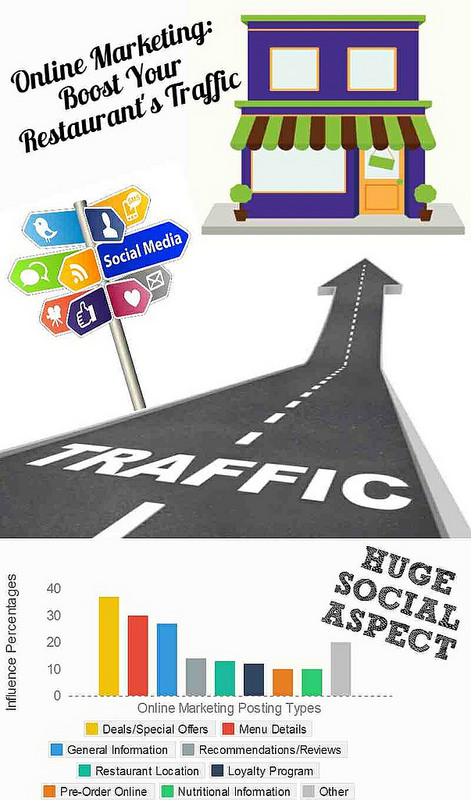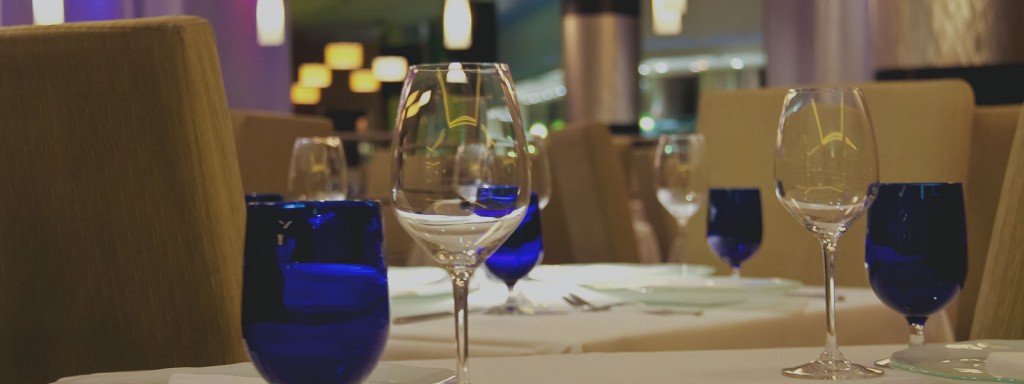Let’s face it. When it comes to restaurant operations, in order to insure optimal success, restaurateurs must go beyond the typical physical amenities such as, menu design, kitchen and bar design, and the fine wine or craft beer list that will ultimately be offered in conjunction with your other dining complements. But just as important as the physical aspects of designing a new restaurant with artistic flair, an important element of restaurant management that must not be ignored is the marketing mix of your budding food enterprise.

Let us start with the basic four Ps of marketing: Product, Place, Price, and Promotion. In the restaurant design process, most restaurateurs focus largely on Product (The food and drinks listed on their menu), Place (Their store’s physical location), and the Price (Also covered in menu design), but either ignore Promotion or they promote their restaurant quite well using only traditional methods, but ignore the online promotional channels available today and thus fail to optimize market development.
When considering market development strategies, keep in mind that consumers today are extremely Internet-savvy, and as the propagation of hand-held smart devices continues, restaurateurs should be mindful of this by adapting and expanding their online presence and making it part of their online marketing plan with the end in mind of improving the customer’s online experience. An online marketing strategy will not only help secure loyal customers by maximizing the restaurateur-patron relationship, but it will also foster the all-important word-of-mouth promotion that will solidify your restaurant’s reputation in the marketplace.
To achieve this, there are several marketing elements that may include an online ad, email, a referral, press release, web search, or a social media mention or “Like.” But, as with all things worth doing, a plan must be in place. And we must do this by establishing a comprehensive, rock-solid online marketing content strategy that will lay the foundation for enhancing your restaurant’s online experience.
Unlike the “legacy” marketing plan of the twentieth-century, to reach consumers effectively in the twenty-first century we must consider online marketing planning from five angles, which according to Lorrie Thomas Ross, an online marketing consultant at Lynda.com, are: Scalability, salability, credibility, usability, and visibility (Ross).
According to Ross, we establish credibility by making a good first impression on your site’s blog, site content, social media, or content videos, as the opportunity for making a compelling first impression is a perishable and precious commodity that you can ill-afford to squander. To be effective, the blog should be a reflection of the motif that is part of the restaurant design. Furthermore, the blog should contain a unique point of view or opinion and an authoritative voice on topics germane to the cuisine and offerings, and it should encourage participation from users and readers. Additionally, if a patron leaves a comment, respond to it in a timely manner. A two-way exchange on a blog will create invaluable brand equity.
Usability, as the name implies, refers to how well customers can use your restaurants online marketing. This is something that needs to be analyzed from the user perspective. Is the site easy to use? Is the navigation clear? Is it aesthetically appealing? Does it invite users to take some sort of action? A functional website will display nearly all of the content for which customers are searching. By all means, avoid using inessential graphics, perplexing navigation, and loaded ads that slurp up the customer’s entire RAM on their computer. Keep it simple and practical.
Equally as important as utility is visibility, and it can be enhanced by using a number of marketing channels. The strategy to address all these questions can come from various sources, such as social media marketing, traditional advertising, organic search, or online PR, including e-mail. Increase online visibility for your restaurant by creating a quality blog using basic on-page search engine optimization techniques. By employing SEO, restaurateurs can rank higher in the search engine results and gain more exposure.
Last in the list is salability. Salability, in this context, is a critical marketing segment and it refers a website’s ability to position value adequately in the minds of customers. As an extension of the physical business, the site should be informative, providing visitors exactly what they are looking for, and it should display professional photos of the restaurant’s interior that will evoke emotion, the strongest impetus for buying, which is stronger than logic and reason. And the aforementioned should be accompanied by purpose. Why is there a website? Is it to showcase the cuisine being offered? Is it to get customers to make a reservation or order food?
And scalability in the restaurant design process is quite simply enhancing current product attributes and applying them in a superior way by allowing the online marketing strategies to act as an extension of the physical location. Once all the essential online marketing components are in position, the successful application of the above-mentioned principals creates scalability, which will result in an enhanced online experience.
For more information on restaurant marketing contact TRG Restaurant Consulting.





